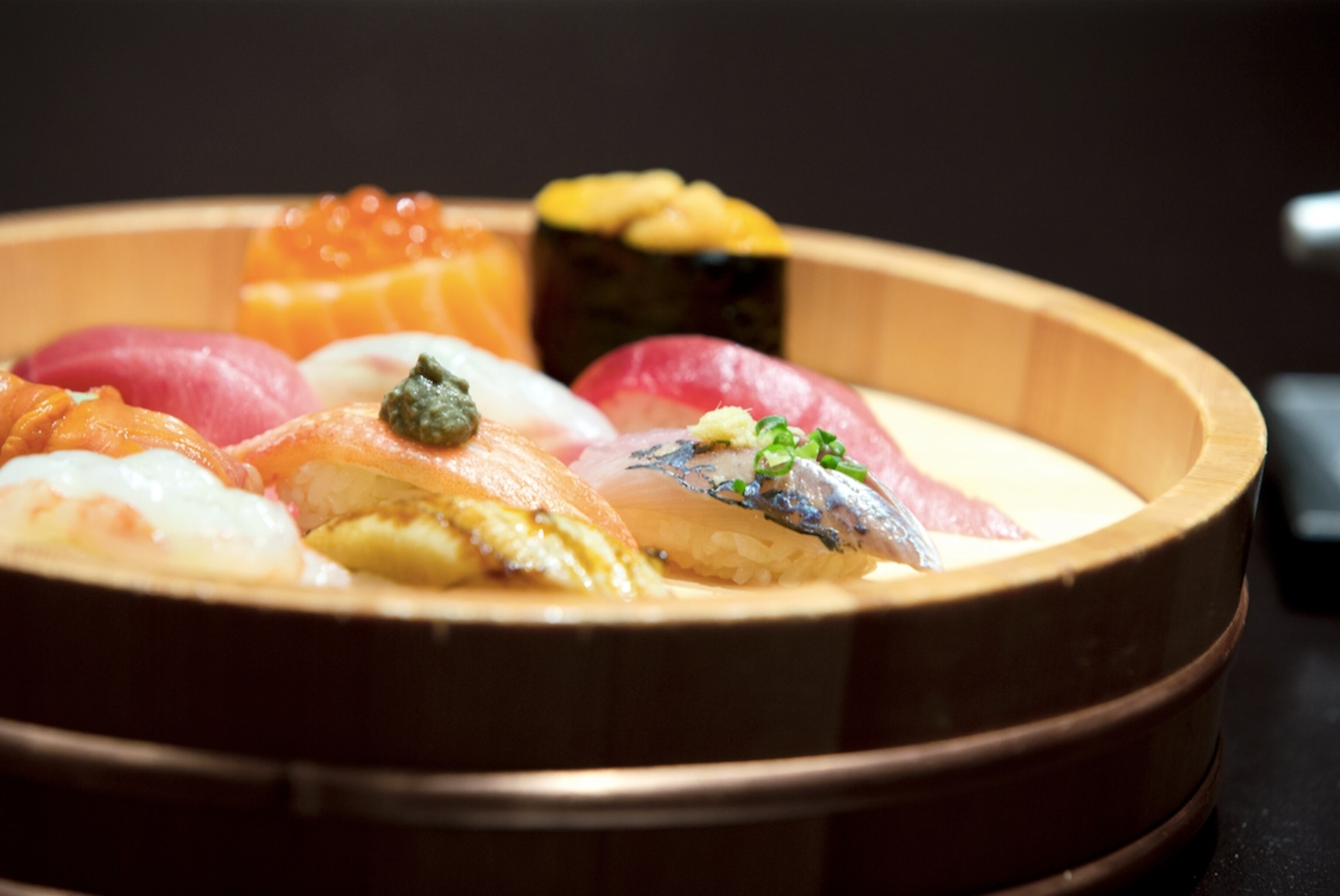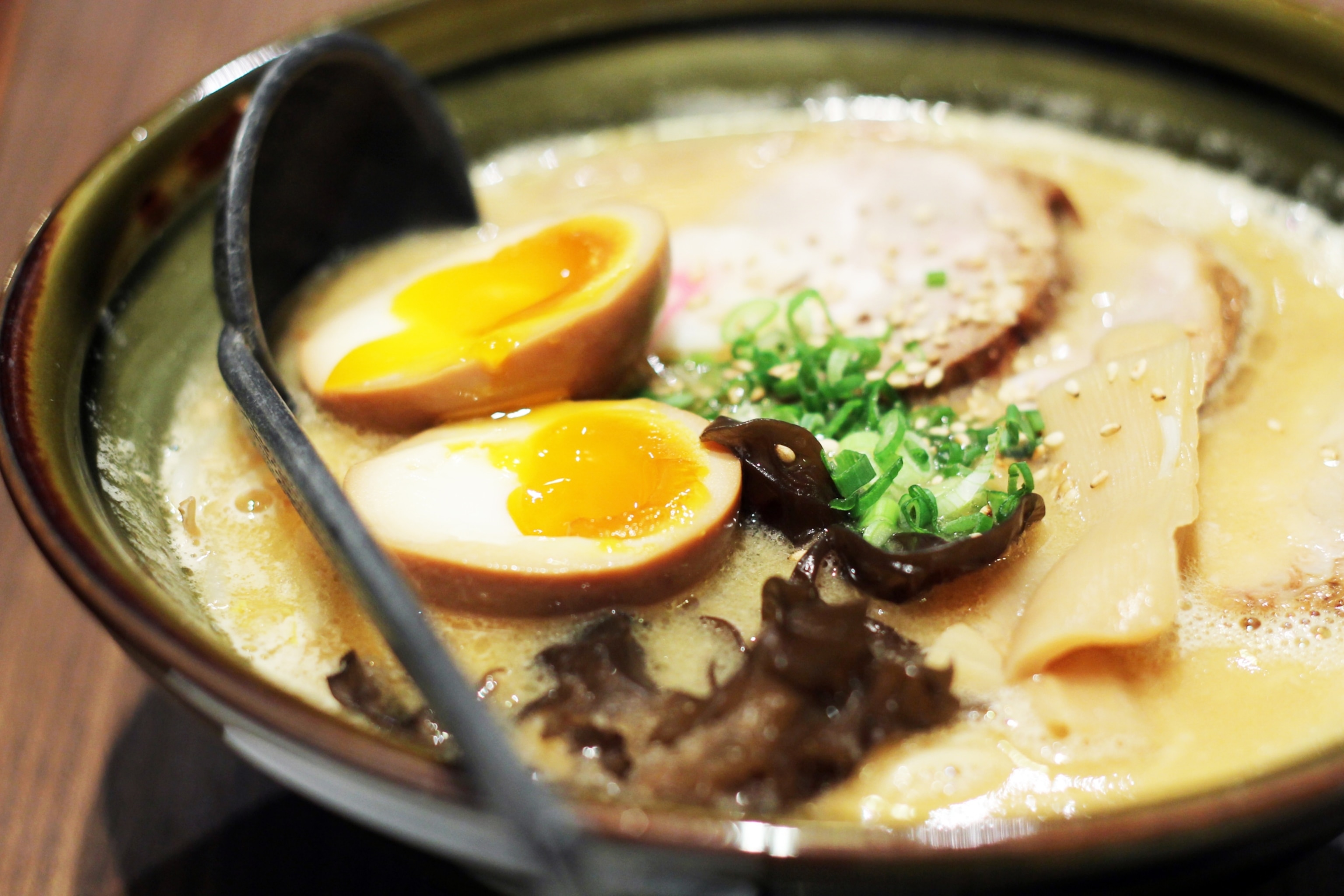
Eating Big in Japan
Sushi is still king, but ramen is making a play for the throne.
You can find just about any type of cuisine in Japan, a modern mecca for food lovers. But it’s two centuries-old dishes that hold pride of place here.
SUSHI
There is no food more quintessentially Japanese than sushi. Today’s sushi has evolved from its practical origins centuries ago, when fermented rice was used to preserve fish. Sushi chefs, or itamae, go through elaborate and sometimes decades-long training to master the precision knife skills and almost encyclopedic knowledge of fish needed.
(Beyond the Bomb: Hiroshima’s Beloved Okonomiyaki Pancake)
The main types of sushi are nigiri, cold rice dressed with rice vinegar (sushi rice), pressed into shape, and topped with raw or cooked seafood, vegetables, cooked egg, or other ingredients; chirashizushi, a bowl of sushi rice topped with those same items; maki, a roll of sushi rice and any number of fillings wrapped in seaweed; uramaki, a maki roll with the rice on the outside of the seaweed; and temaki, a hand-rolled seaweed cone filled with sushi rice and other ingredients.

Sushi is now popular worldwide, but the finest offerings and itamae are still found in Japan. Tokyo, of course, has world-class chefs and fresh seafood from all reaches of the globe. (There’s a reason the Tsukiji fish market is the largest in the world.) Osaka, the country’s second largest city, is the birthplace of hakozushi, sushi that’s layered, pressed in a wooden box, and then cut into beautiful slices. Perched on the Sea of Japan’s Toyama Bay (“nature’s fish tank”), Toyama has nearly every ingredient at its fingertips for some of the country’s finest sushi.
To enjoy a meal, head to a sushi restaurant (sushi-ya). Sit at the sushi bar if you’d like to watch the chef at work or interact with him. Use chopsticks for sashimi, but pick up nigiri with your hands. Dip just the fish side of nigiri (to keep the rice from soaking up too much and coming undone) and eat it in one bite. Between types of sushi, have a bit of ginger to cleanse your palate and prepare for the next delicacy to come.
RAMEN
Sushi’s other half in the hearts (and stomachs) of Japanese is ramen, as rich and layered as sushi is delicate and singular. Ramen is an art form in Japan, bearing little resemblance to the instant soup packets beloved by college students (and broke adults) in the U.S. A nuanced noodle soup, it was carried from China by tradesmen in the 1800s but brought to life under the hands of Japanese cooks.

Ramen has two main components: the broth and the noodles. Broth styles vary across regions, but it usually has a chicken or pork stock base, with other ingredients added to deepen the flavor—sardines, onions, mushrooms, kelp, you name it. The noodles used in ramen are made from wheat; the size and shape varies regionally. Alkaline mineral water gives them a slightly firm texture and a bit of a yellowish hue.
- National Geographic Expeditions
The soup is served with toppings, anything from a few spring onions and strips of pork to boiled eggs, fish cakes, and pickled plums.
You can find ramen in any village, town, or city across Japan (look for ramen-ya, or ramen shops), but these three are particularly renowned for their regional variations. Sapporo (the largest city on the northern island of Hokkaido) is a standout for its miso ramen, a thick, hearty variation that was developed there. Kitakata, a small city in Fukushima Prefecture, specializes in ramen with thick, curly noodles and a soy sauce-based broth. (It’s also said to have the highest concentration of ramen-ya per capita.) And Fukuoka in Fukuoka Prefecture produces Hakata ramen (named after the city’s historic district), which has thin noodles and a white broth made by boiling pork bones.

So how do you eat ramen? Quickly. Many ramen-ya are standing room only, not places where you’re meant to linger over your meal. Follow Japanese custom and bend over your bowl, slurping the noodles up with chopsticks (never a fork!). Use the spoon for broth—and once the noodles are gone, indulge in the urge to pick the bowl up and drink the good stuff down.




